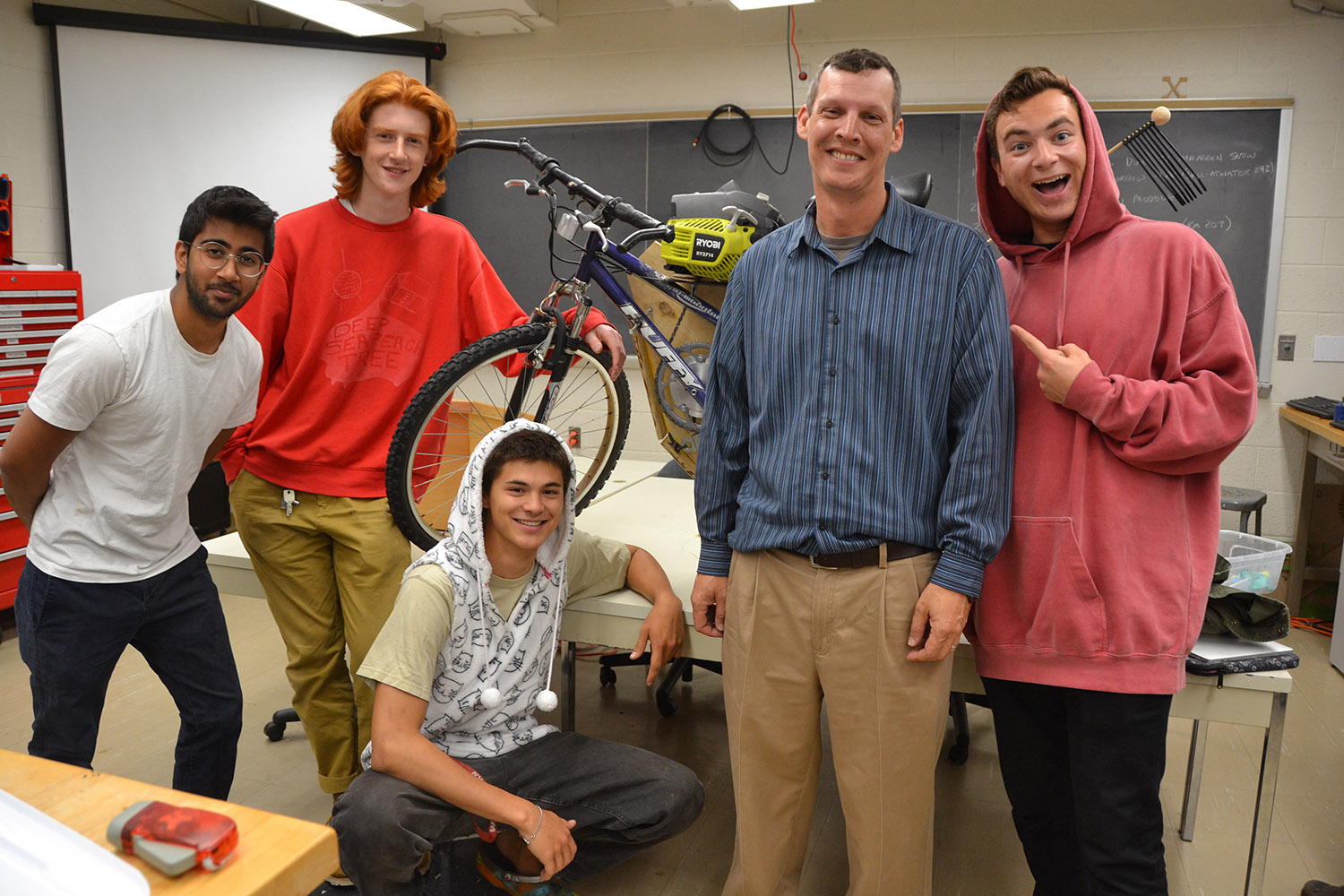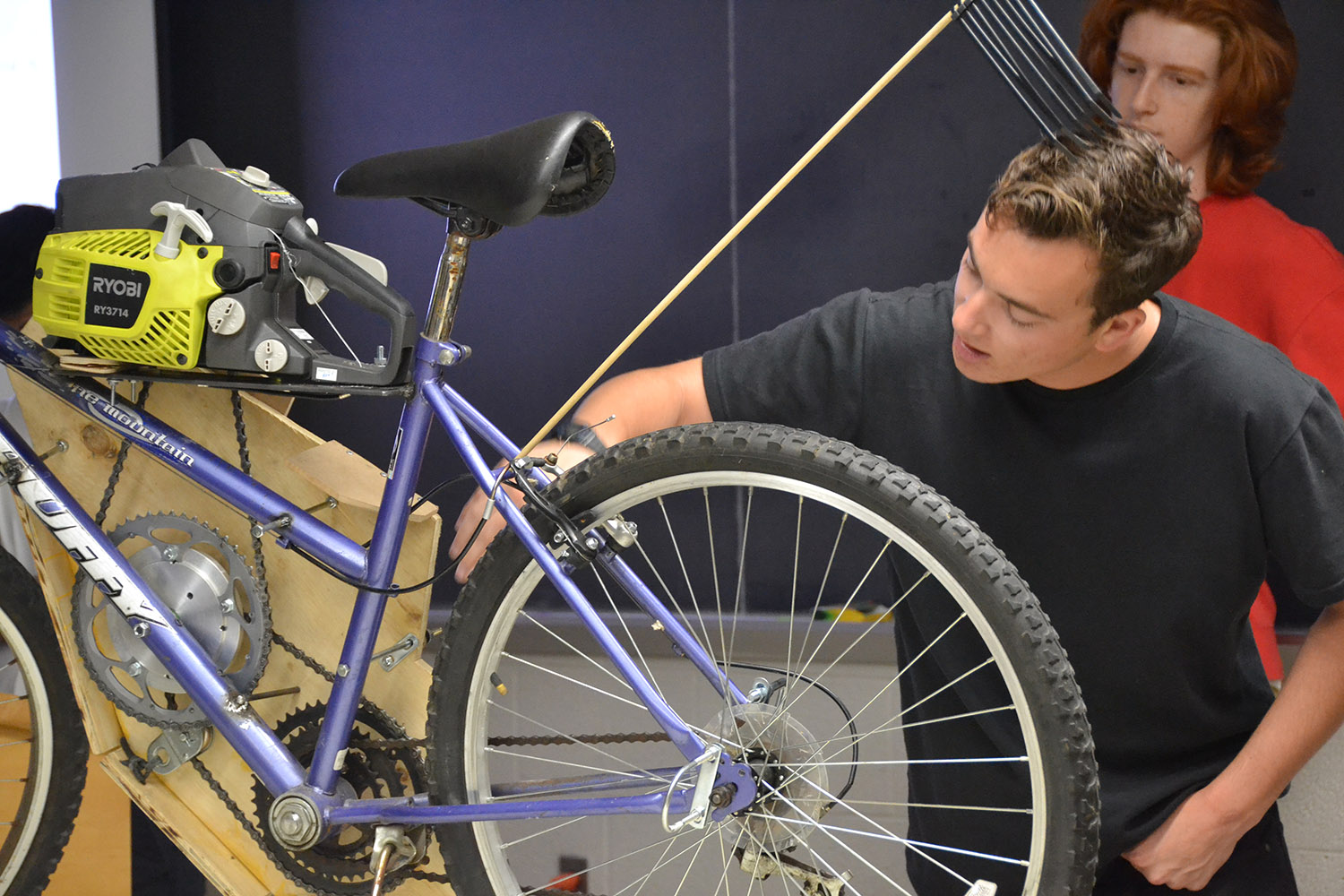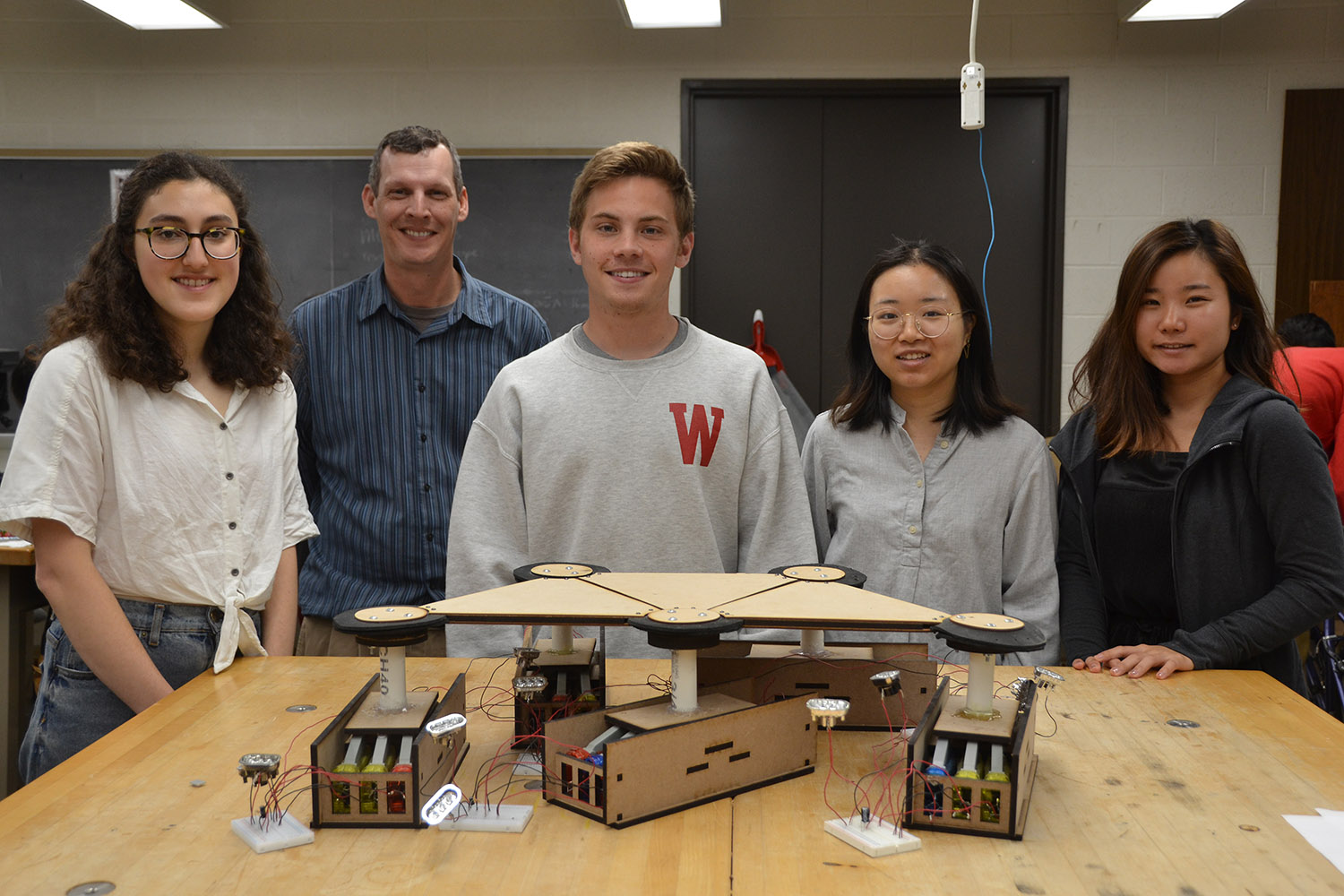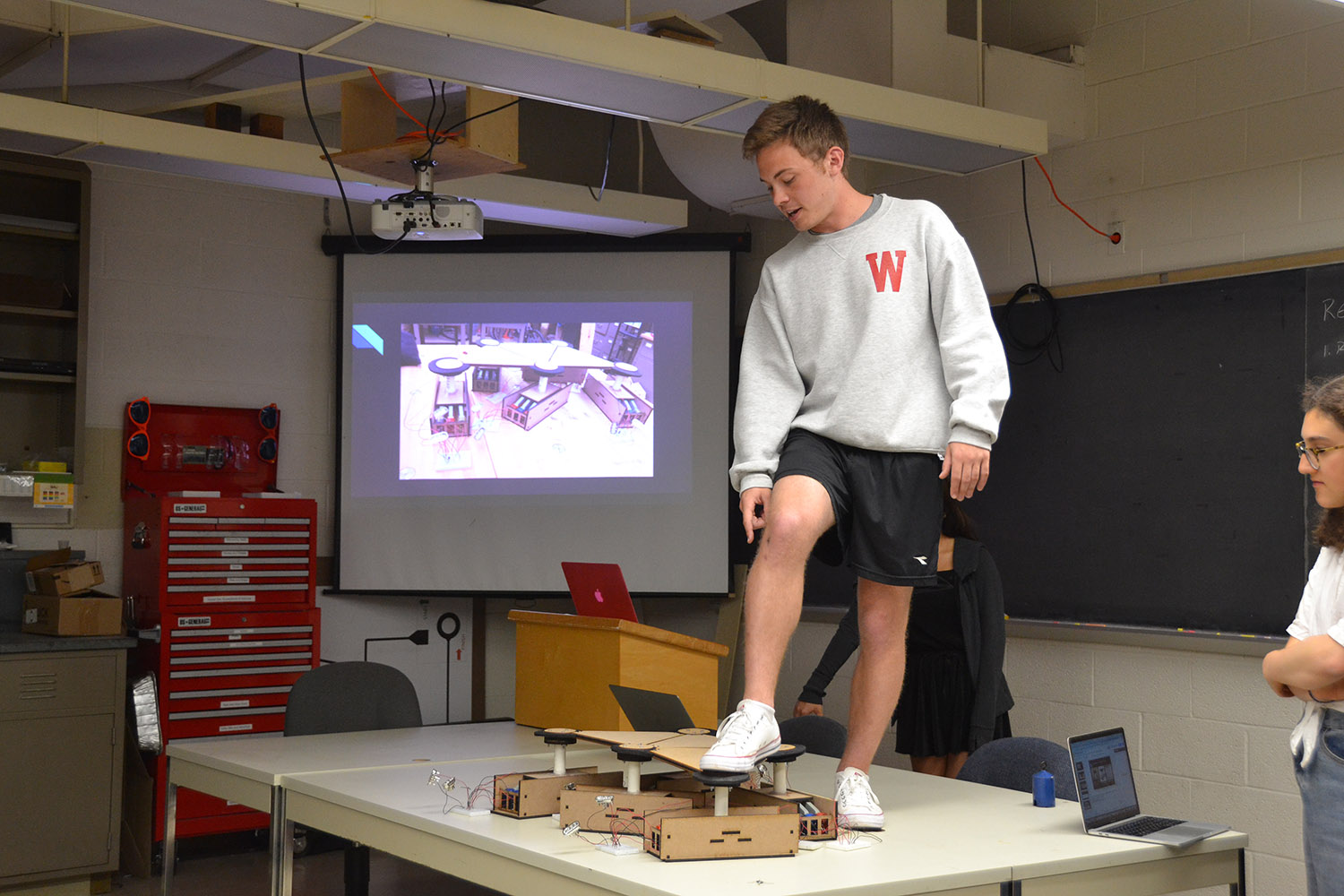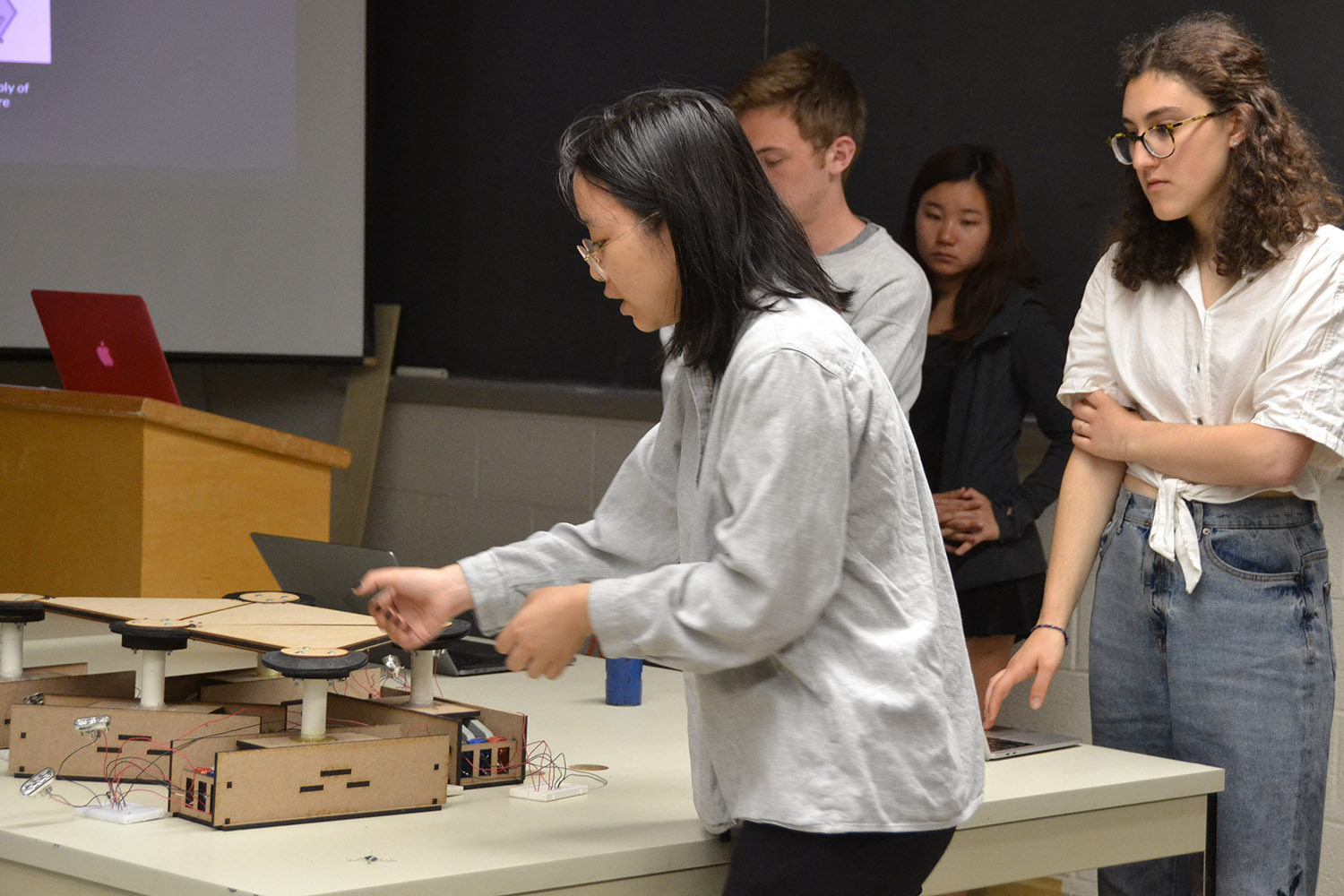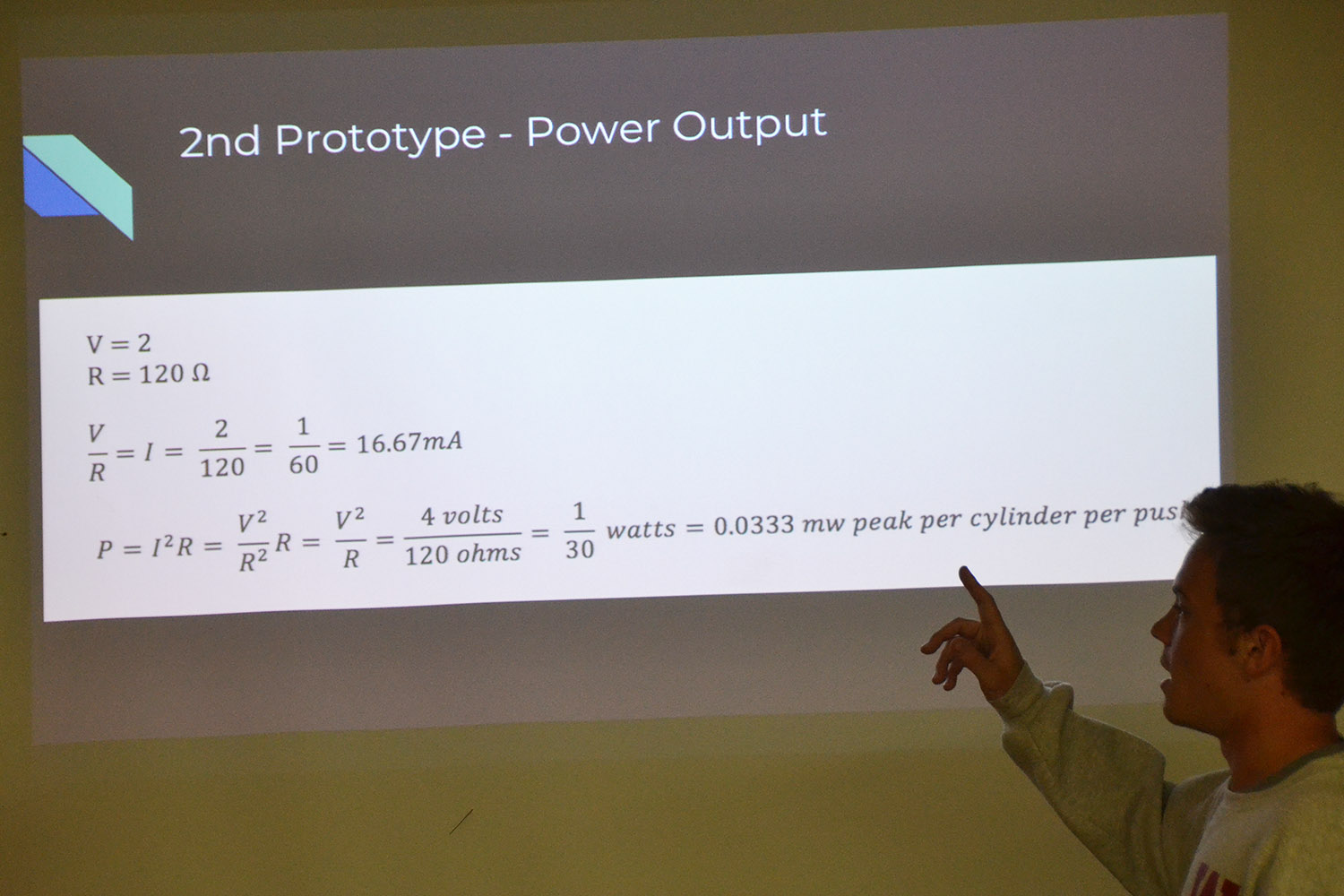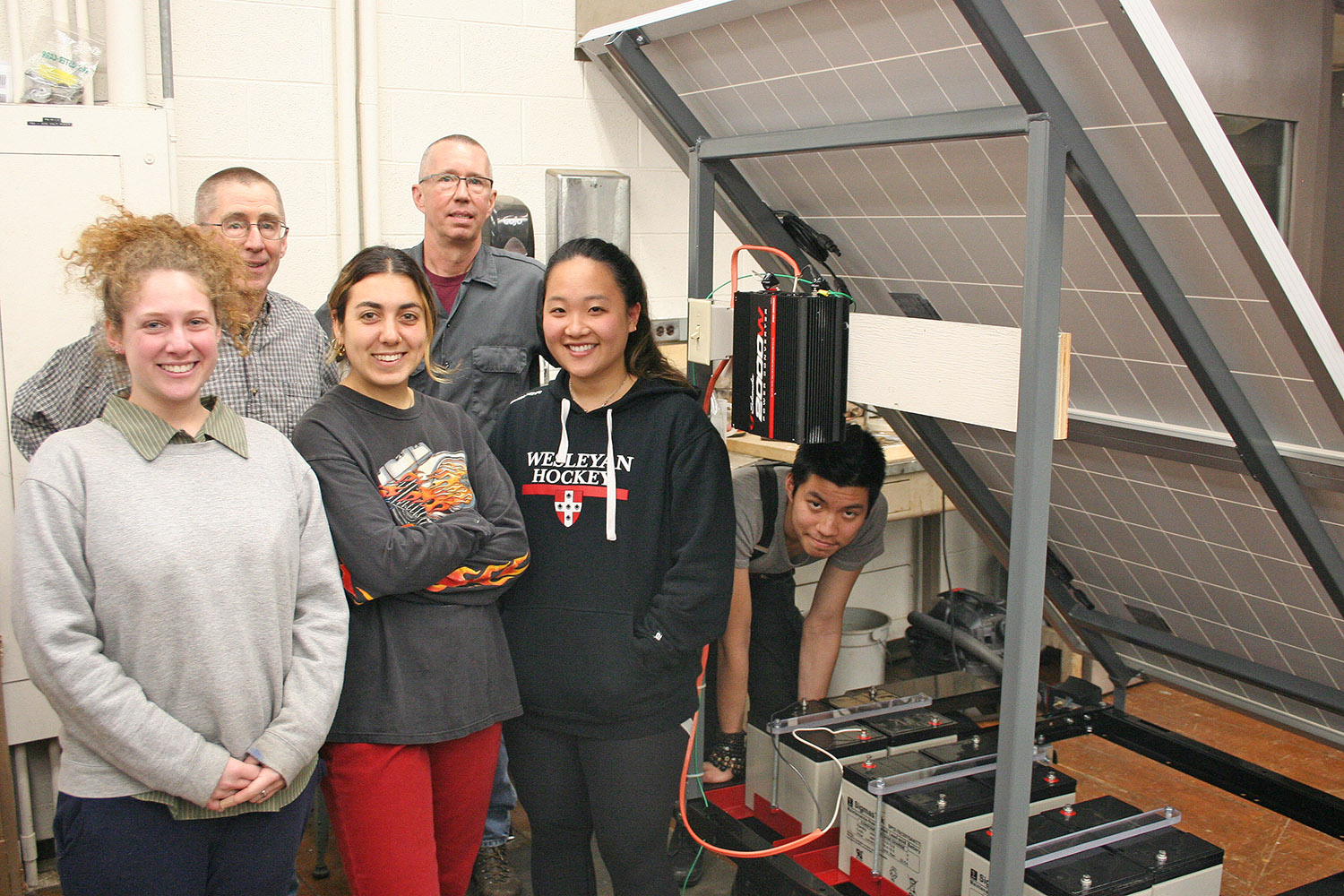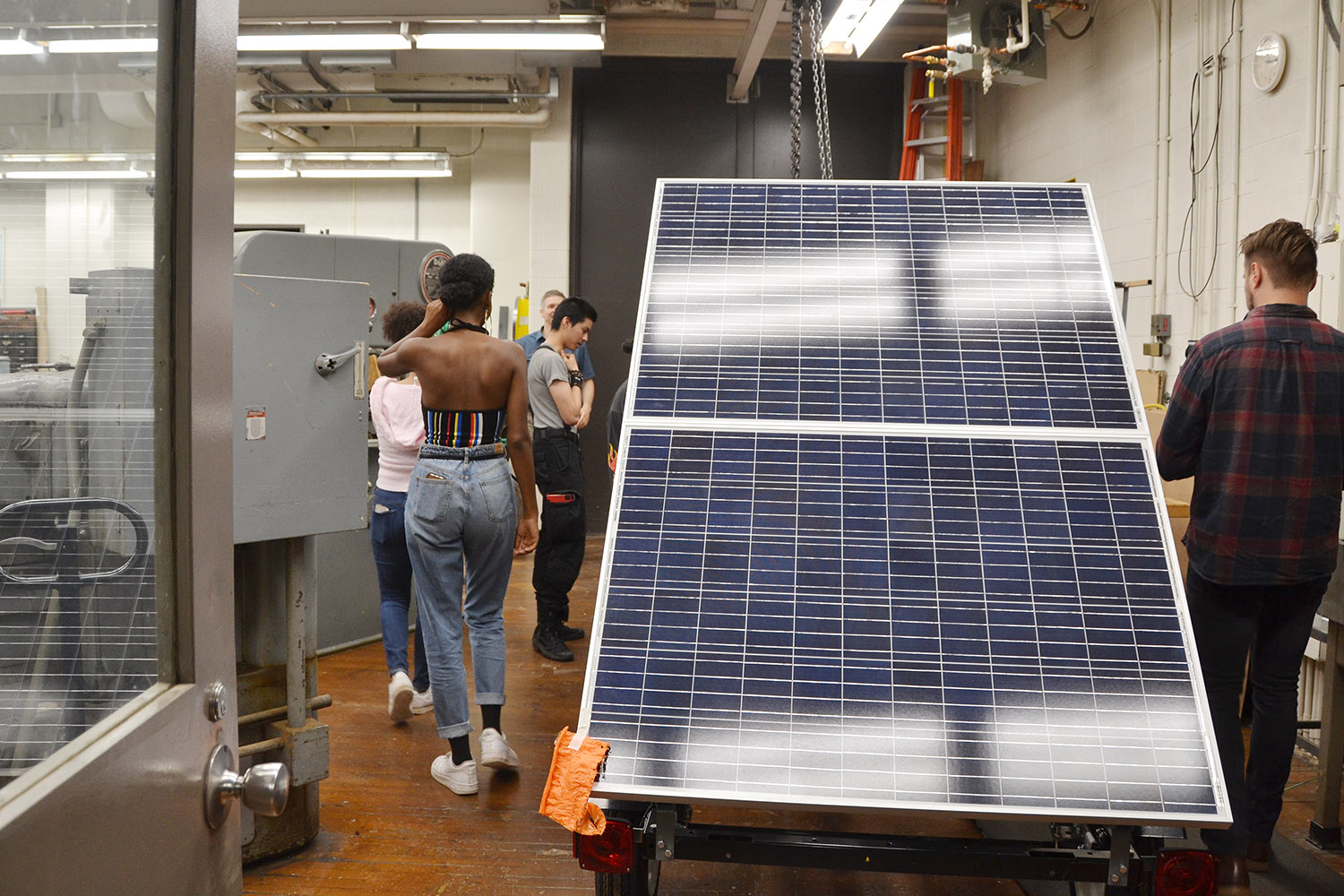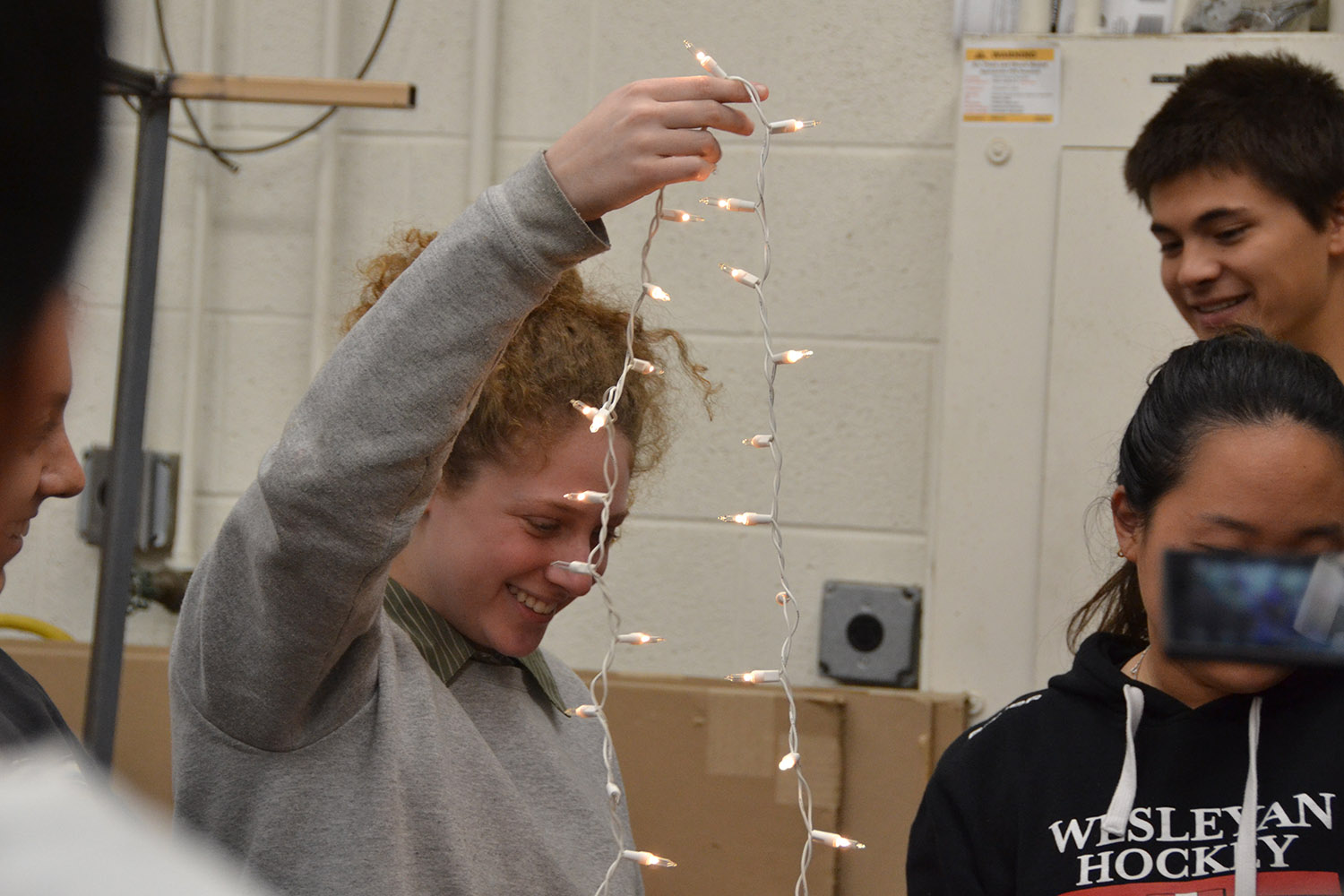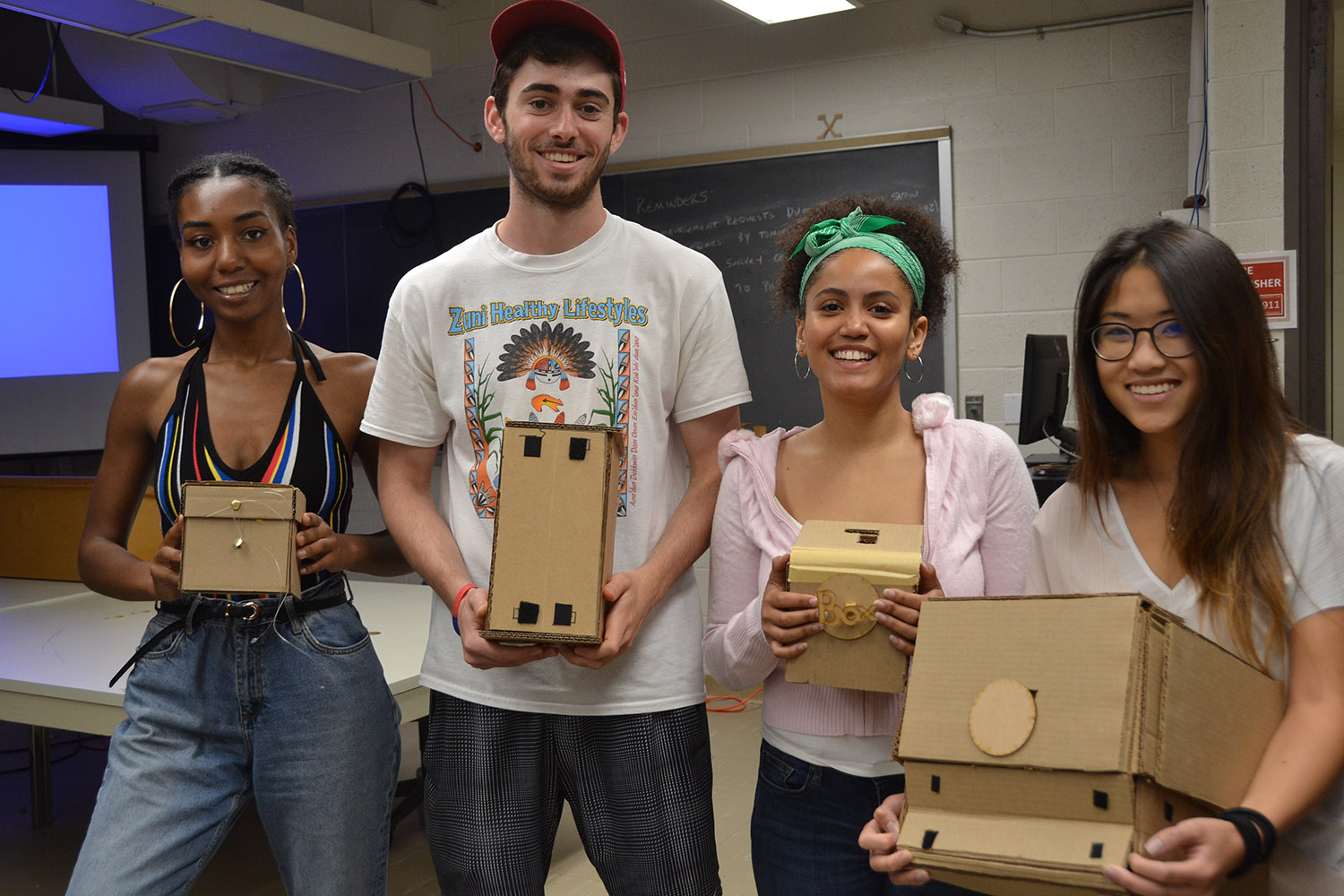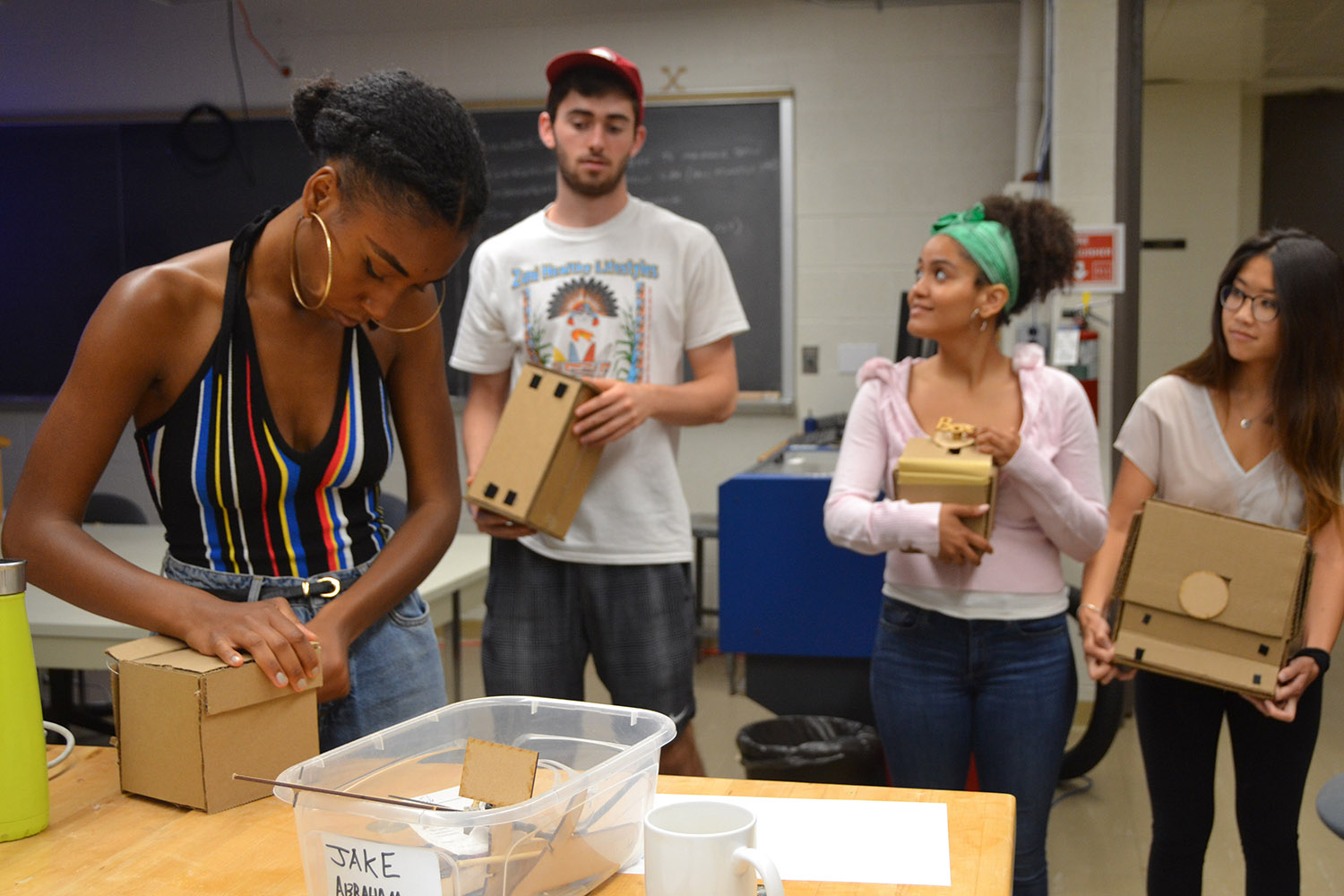Students Showcase Design and Engineering Projects
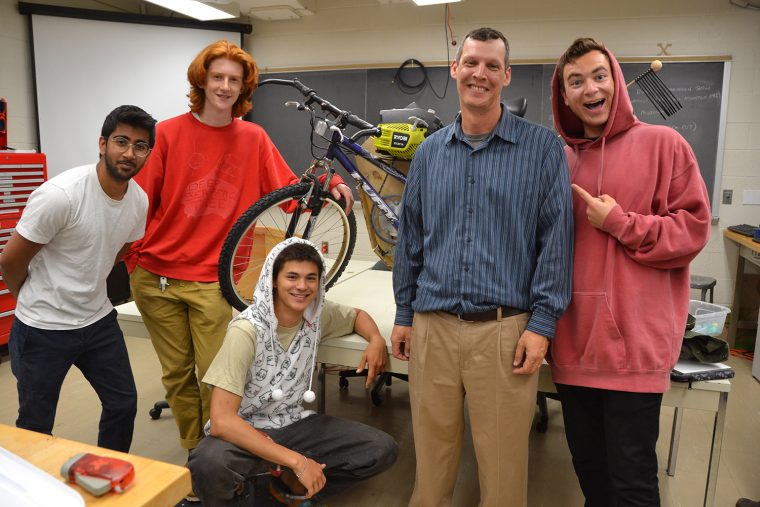
Final projects for Introduction to Design and Engineering (IDEA 170 in the Integrated Design, Engineering, and Applied Sciences Minor) included a bicycle powered by a chainsaw motor; reusable, lockable shipping boxes requiring no tape; an electricity-producing dance floor; and the “solar rover”—solar panels with storage batteries mounted on wheels and designed for long-term use around the University as a mobile power source for events and solar power education.
Taught by Professor of Physics Greg Voth, who chairs the department, and Assistant Professor of the Practice in Integrative Sciences Daniel Moller, the course offered 16 students the opportunity to work collaboratively on project-based studies at the intersection of design, the arts, and engineering. The course is part of a new interdisciplinary minor, the Integrated Design, Engineering, and Applied Sciences (IDEAS) program, hosted and administered by the College of Integrative Sciences (CIS).
Professor of Physics and Director of the CIS and the IDEAS program Francis Starr noted, “These projects are amazing examples of what Wesleyan students can do when given the skills and opportunity to creatively explore design and engineering. And I think this is why we have already seen about 30 students enroll in the new IDEAS minor in just its first year. I can’t wait to see what next year brings.”
Moller concurs: “IDEA 170 is a great opportunity for students to explore an open-ended design and fabrication environment, to recognize the technical challenges of putting ideas into action, and to learn about themselves as designers.”
(Photos by Cynthia Rockwell and Daniel Moller)
